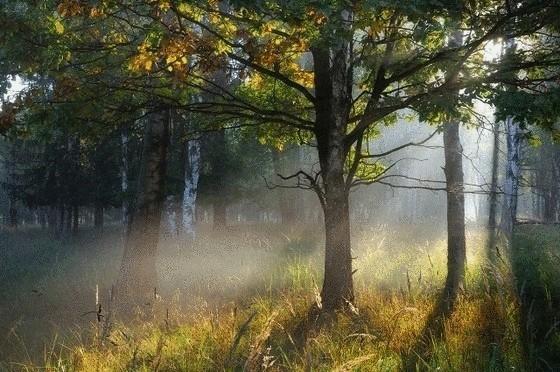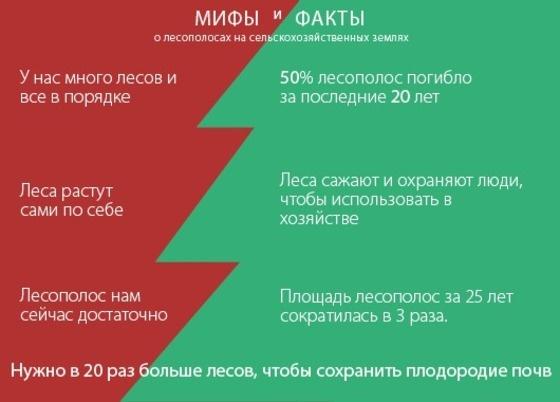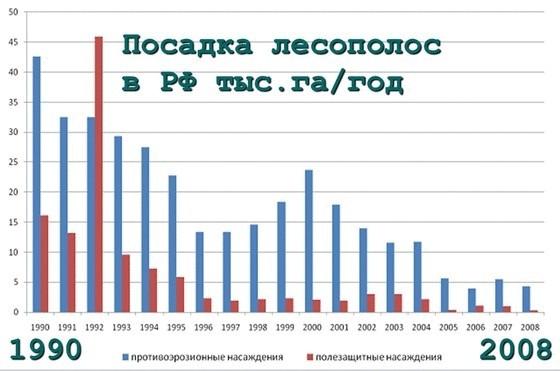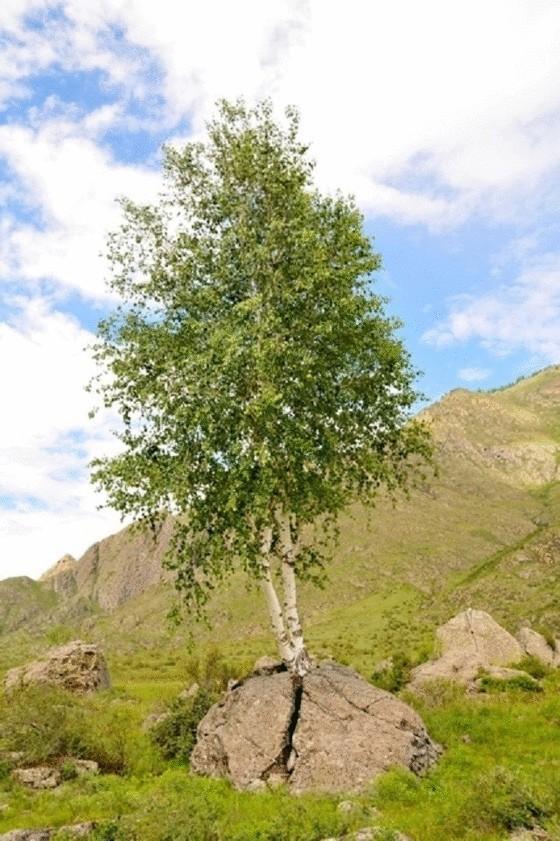441
The project "let's Revive our forest" gathered 600 000 on the crowdfunding
We often write about environmental startups, which raised funds on crowdfunding platforms like Kickstarter. Today we tell about the domestic project "let's Revive our forest", which successfully gathered more than 600 thousand rubles.

Our task is to plant a huge number of belts in Russia, — says the author of the project is candidate of economic Sciences Andrey Stetsenko.

In 40-ies has developed a comprehensive program of scientific regulation of nature in the Soviet Union known as "the Stalin plan to transform nature". The project was designed for the period 1949-1965., and envisaged the creation of 8 major forest state bands in the steppe and forest-steppe regions of the USSR, with a total length of more than 5300 kilometres. The adoption of the draft was preceded by a drought and famine of 1946-1947. These strips were planted 2.3 million hectares of forest.
Since the beginning of 1990-ies is in the process of their degradation and decline. Previously, forest plantations were owned by collective farms and state farms, which kept them in good condition. With the collapse of the old economic system of shelterbelts became ownerless, draws.
When in the Altai region conducted an inventory of shelterbelts, the picture is bleak. In 1990 in the region, there were 140 thousand hectares of forest belts by 2011 remained less than half — 69 thousand. Scientists began to warn that if not to accept emergency measures, Altai will return the dreaded "dust storm", which caused enormous damage to agriculture in the late 50's-early 60-ies of the last century — during the total development of virgin and fallow lands. The situation was saved by a network of forest plantations, planting of which involved the whole region, starting with foresters and ending with the students. It was a truly nationwide project.
However, most forest plantations to live less than ten years, and it means that on the threshold of a new "dust storm" that will destroy the remnants of the famous black earth of Altai. Now in the region adopted the program of restoration of forest belts designed for 25 years. It is assumed that their area will be increased to 190 thousand hectares. To do this, according to representatives of the forestry, it is easy, given modern technology and equipment, knowledge and experience. But again, we need money. By the way, the experience of this project are already interested in Kazakhstan, where there is a similar situation with the belts.
Scientists, leased 10 thousand hectares of young forests in order to protect them from fires and destruction.

Forests absorb carbon dioxide CO2 and producing oxygen O2 in photosynthesis. Shelterbelts protect agricultural lands from water and wind erosion of soil, protect from drought, hold moisture, improve yields by 30-40%, increase biodiversity and shape sustainable agriculture.
Moreover, this forest will now offset the carbon footprint.
A forest project in year absorb more than 350 thousand tons of CO2. This means that the project compensates for the annual carbon footprint of almost 19 thousand people, ie the population of a small town or large city center.
The project was supported 465 sponsors and will now be implemented. We would like to congratulate the organizers!

For us, this birch has become a symbol. She broke their vitality boulder and broke. When we photographed it, we had Association with our project. Chemal district, Altai mountains. Andrey Stetsenko And you have already planted your forest?
Source: rodovid.me

Our task is to plant a huge number of belts in Russia, — says the author of the project is candidate of economic Sciences Andrey Stetsenko.

In 40-ies has developed a comprehensive program of scientific regulation of nature in the Soviet Union known as "the Stalin plan to transform nature". The project was designed for the period 1949-1965., and envisaged the creation of 8 major forest state bands in the steppe and forest-steppe regions of the USSR, with a total length of more than 5300 kilometres. The adoption of the draft was preceded by a drought and famine of 1946-1947. These strips were planted 2.3 million hectares of forest.
Since the beginning of 1990-ies is in the process of their degradation and decline. Previously, forest plantations were owned by collective farms and state farms, which kept them in good condition. With the collapse of the old economic system of shelterbelts became ownerless, draws.
When in the Altai region conducted an inventory of shelterbelts, the picture is bleak. In 1990 in the region, there were 140 thousand hectares of forest belts by 2011 remained less than half — 69 thousand. Scientists began to warn that if not to accept emergency measures, Altai will return the dreaded "dust storm", which caused enormous damage to agriculture in the late 50's-early 60-ies of the last century — during the total development of virgin and fallow lands. The situation was saved by a network of forest plantations, planting of which involved the whole region, starting with foresters and ending with the students. It was a truly nationwide project.
However, most forest plantations to live less than ten years, and it means that on the threshold of a new "dust storm" that will destroy the remnants of the famous black earth of Altai. Now in the region adopted the program of restoration of forest belts designed for 25 years. It is assumed that their area will be increased to 190 thousand hectares. To do this, according to representatives of the forestry, it is easy, given modern technology and equipment, knowledge and experience. But again, we need money. By the way, the experience of this project are already interested in Kazakhstan, where there is a similar situation with the belts.
Scientists, leased 10 thousand hectares of young forests in order to protect them from fires and destruction.

Forests absorb carbon dioxide CO2 and producing oxygen O2 in photosynthesis. Shelterbelts protect agricultural lands from water and wind erosion of soil, protect from drought, hold moisture, improve yields by 30-40%, increase biodiversity and shape sustainable agriculture.
Moreover, this forest will now offset the carbon footprint.
A forest project in year absorb more than 350 thousand tons of CO2. This means that the project compensates for the annual carbon footprint of almost 19 thousand people, ie the population of a small town or large city center.
The project was supported 465 sponsors and will now be implemented. We would like to congratulate the organizers!

For us, this birch has become a symbol. She broke their vitality boulder and broke. When we photographed it, we had Association with our project. Chemal district, Altai mountains. Andrey Stetsenko And you have already planted your forest?
Source: rodovid.me
























